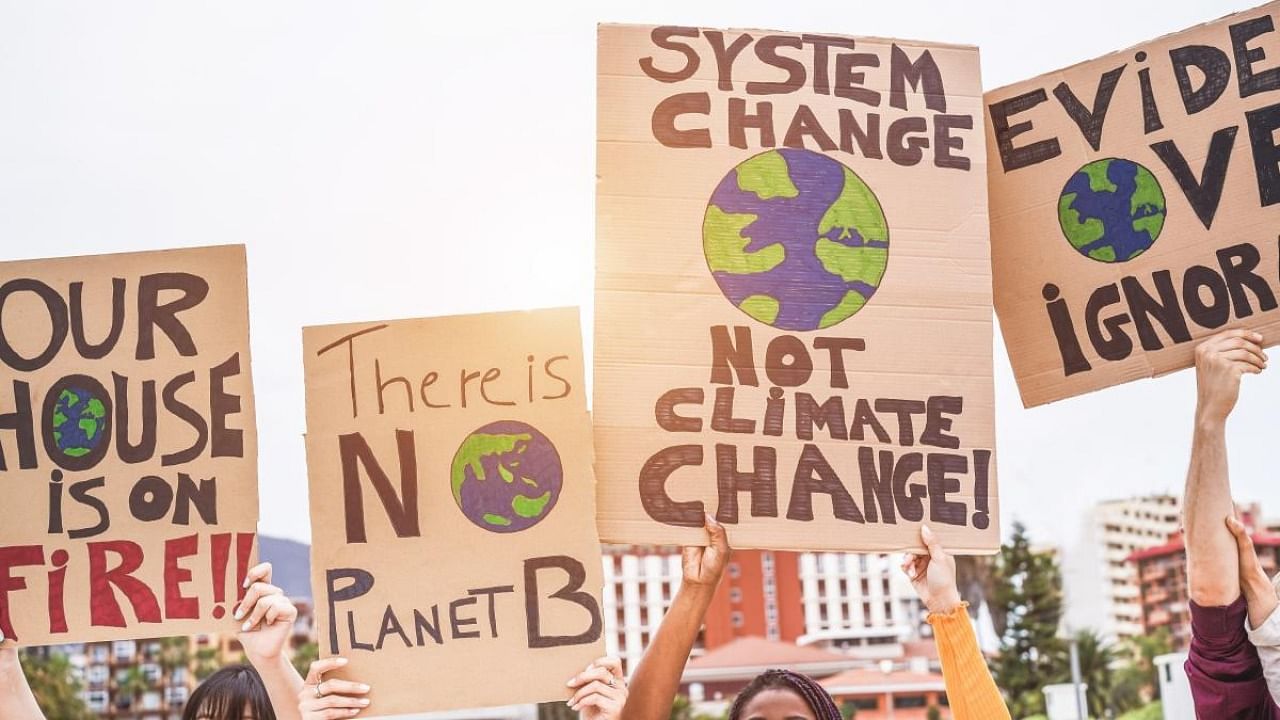
The rising temperatures in some places, excessive rains elsewhere, and other extreme aberrations of natural phenomena in most parts of the world have provided evidence of the continuing degradation of the environment.
Credit: iStock photo
Another Environment Day has passed by, without the natural environment of the world or the immediate surroundings showing any improvement, but actually showing deterioration. The threat to the environment manifests in many ways, like the increasing pollution of the air, land and water. The rising temperatures in some places, excessive rains elsewhere, and other extreme aberrations of natural phenomena in most parts of the world have provided evidence of the continuing degradation of the environment. The changes in the environment have impacted the lives of human beings and all other living beings. This is because all living beings are part of the environment and there should be a congenial, not adversarial, relationship between the two. That has not been the case so far, and what has been termed as progress and development has been a story of mindless subjugation of nature and destruction of the environment by humans.
The theme of this year’s Environment Day was “Our land. Our future. We are #GenerationRestoration” and the focus was on restoring land, combating desertification, and enhancing drought resilience. Large tracts of land have been lost or degraded because of human activities and adverse climatic and other disasters. The rate of loss and degradation of land is increasing. It is estimated that 12 million hectares of land is lost annually. The UNEP (United Nations Environment Programme) has called for urgent action to prevent, halt and reverse ecosystem degradation, reminding the world that this is the last opportunity to reverse the course of destruction. It has prescribed replanting of forests, rewetting of marshes and revival of soils as the priority actions needed for regeneration of ecosystems. Climate change and global warming, which are adversely affecting lives, economies and societies, are both the effect and the cause of the degradation of environment, in a vicious cycle of mutual aggravation.
Land degradation affects food production and leads to food insecurity. As much as 20 million tonnes of grains are lost every year. It also leads to biodiversity loss and extinction of many species. In India, the immediate impact of land degradation and desertification has been seen in the high summer temperatures in North India. Other parts of the country have seen other harmful consequences. There is the need for action at the global, national, community and individual levels to prevent degradation of the environment. The UNEP calls for continued investment in innovative solutions to develop new strategies and spreading awareness about the importance of restoring nature. Development needs to be sustainable so that it may promote human welfare. There is increasing awareness about the need to protect the environment but it is yet to be translated into necessary and effective action everywhere.